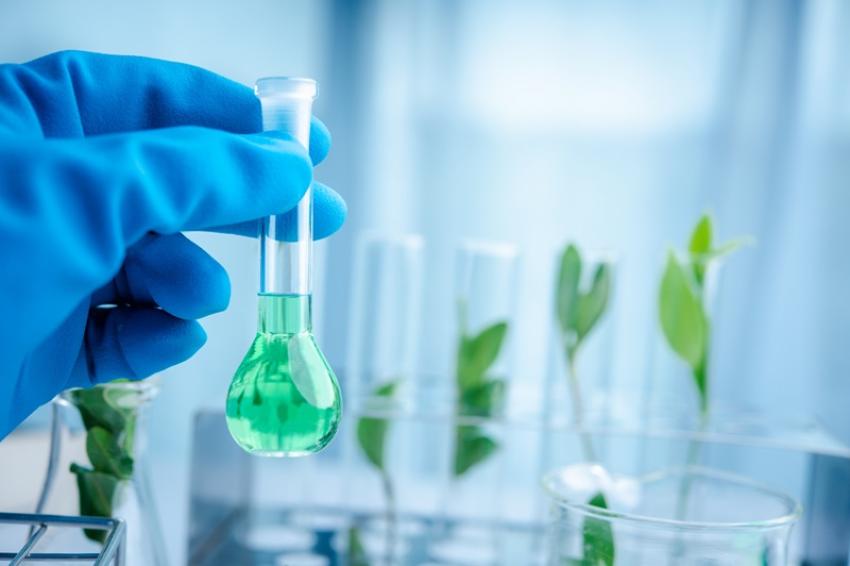Opportunities for Biobased Specialty Chemicals
Specialty Chemicals Markets Are Challenged by Increasing Sustainability Requirements
In some countries with substantial chemical production this share is considerably higher, for example, in Germany the share is about 5%. Thus, any attempts to reach net-zero carbon dioxide emissions must necessarily also include the chemical value chain.
Other drivers of this transition are increasingly higher consumer demand for sustainably sourced products and potentially higher costs of carbon-emitting production processes (e.g., if a carbon tax is introduced). The chemical industry, thus, has strong incentives to examine the potential of biobased chemicals. Fundamentally, this research can either focus on replacement of established petrochemical-based products or developing new, biobased products with innovative performance attributes. Besides that, the transfer of chemical production processes into biotechnological routes often leads to a better sustainability profile.
Today, most of the industry interest is focused on high-volume consumer products such as commodity chemicals in home or personal care segments with skin-friendly, biodegradable or other mild product features e.g. like biosurfactants. Other examples are biobased materials including PLA (polylactic acid), PBS (polybutene succinate) and PHA (polyhydroxyalkanoate) as well as conventional polymers produced from biobased monomers (e.g., polypropylene, certain polyamides).
However, beside the broader use of biobased commodities, biobased specialty chemicals offer substantial opportunities for new value adding product features while optimizing companies’ carbon footprint. Not only will this accelerate product innovation and further decrease the carbon dioxide emissions of the industry, it may also have a range of other benefits such as production cost savings e.g. driven by shorter synthetic routes and milder reaction conditions. When replacing established performance chemicals, biobased materials will have to perform equally or better, not just reduce overall carbon dioxide emissions.
"In some chemical segments, biobased materials are already widely employed while in others their penetration so far is very small.”
Alternative biobased materials of course will have different properties and performance characteristics and may thus also require more extensive efforts for a successful commercialization.
In some chemical segments, biobased materials are already widely employed while in others their penetration so far is very small. A paper commissioned by the European Commission provides estimates for the total production, the biobased production and the resulting share of biobased production for a number of chemical categories.
Clearly, for some segments such as surfactants, biobased materials account for a large share of the market – in this example, due to the significant use of biobased oleochemicals in surfactants. Cosmetics and personal care products applications are another stronghold while in basic chemicals (which the study calls platform chemicals—the main seven chemicals in this category are lactic acid, epichlorohydrin, ethylene glycol, ethylene, sebacic acid, 1,3-propanediol and propylene glycol) the penetration of biobased materials is very low. However, the basic chemicals industry is actively searching for options to replace petrochemical feedstocks by biobased alternatives, e.g. replacing phenol by lignin, producing polyethylene or ethylene glycol via ethylene derived from bioethanol, or producing bio-nylon from biobased caprolactam.
So, what kind of presence do biobased specialty chemicals currently have in the market? Here are some examples of commercially available biobased materials:
- Surfactants, including those derived from vegetable oils and coconut oil (e.g., cocamide DEA).
- Emollients sourced from natural oils, for example, jojoba esters derived from jojoba oil.
- Polyols for use in polyurethane production obtained from, e.g., castor oil via modification of the ricinoleic acid that is the main component of the oil.
- Biocides derived from plant extracts (e.g., an antimicrobial derived from citrus extracts is marketed as Gaia AB 504 for use in thermoplastics) or via microbial fermentation.
- Chelating agents as offered by, e.g., BASF with their Trilon M Max EcoBalanced, an aqueous solution of the trisodium salt of methylglycinediacetic acid, which uses renewable feedstock such as bionaphtha or biogas as raw material.
- Rheology modifiers used in cosmetics, such as a biopolymer naturally derived from Tara Gum biopolymer and marketed by Clariant under the brand name Plantasens Biogum Tara.
- Antioxidants including tocopherols (vitamin E from plants).
- UV absorbers derived from plant extracts. A patent also describes UV-shielding bioderived furanic polymers.
- Enzymes – these are already heavily used in detergents, with one market study by FMI estimating a 2022 global market size of $5.7 billion and a CAGR of more than 7%.
- Dyes and pigments made from plant extracts. These are of course much older than synthetically produced ones, and have been used in textiles for thousands of years. In addition, microbial production is also an option.
- Catalysts which are used in the production of biodiesel and other reactions. For example, Reaxis works on sustainably sourced metal-based catalysts derived from plant-based and recycled materials.
- Plasticizers made from base oil raw material originating from renewable resources, such as the Biovero plasticizer for PVC offered by Cargill.
Excellent opportunities for developing biobased products are especially in applications with direct impact on human health (e.g. personal care ingredients, food ingredients, food packaging or pharmaceutical actives) or to the environment (e.g. lubricant additives, water chemicals, …).
As a consequence, the market potential of biobased specialty chemicals is growing substantially above market average especially in life sciences applications and environmentally sensible market segments.
Our clients are increasingly interested in the potential of biobased products for actively innovating their product portfolio, e.g. by replacing established products or by exploring new applications for biobased materials.
A project example is the assessment of potential new technical applications for plant oil / fatty acid derivatives in specialty chemicals segments. When screening various potential application segments, a general finding was that the best opportunities to replace fossil materials are when some of the following advantages of biobased products are demanded
- Health benefits
- Green marketing claims
- Biodegradability of materials
- Improved carbon footprint
- Reduced regulatory pressure
"The market potential of biobased specialty chemicals is growing substantially above market average."
Preconditions for replacing conventional with biobased products are to achieve the same or better product performance and a comparable price level - though higher prices can potentially be justified by additional performance attributes.
However, there are some challenges to be dealt with when applying biobased specialty chemicals. Due to the natural feedstock base, the product quality and composition might not be stable or constant and biobased substances often represent mixtures of different biochemicals which cannot precisely be defined.
Overall, specialty chemicals markets are generally challenged by increasing sustainability requirements and customer expectations. Producers should actively assess the potential biobased products may offer and develop concepts how to replace fossil-based precursors and conventional specialty chemicals with biobased materials.
Estimated Production Share of Biobased Chemicals in the EU
|
Product category |
Biobased production |
Total EU production |
EU biobased production |
|
Platform chemicals |
181 |
60,791 |
0.3 |
|
Solvents |
75 |
5,000 |
1.5 |
|
Polymers for plastics |
268 |
60,000 |
0.4 |
|
Paints, coatings, inks and dyes |
1,002 |
10,340 |
12.5 |
|
Surfactants |
1,500 |
3,000 |
50.0 |
|
Cosmetics, personal care products |
558 |
1,263 |
44.0 |
|
Adhesives |
237 |
2,680 |
9.0 |
|
Lubricants |
237 |
6,764 |
3.5 |
|
Plasticizers |
67 |
1,300 |
9.0 |
|
Man-made fibers |
600 |
4,500 |
13.0 |
|
Total |
4,725 |
155,639 |
3.0 |
Source: JRC Science for Policy Report 2019
Authors: Volker Schlüter, ChemAdvice, Wiesbaden, Germany
Kai Pflug, ChemAdvice and Management Consulting - Chemicals, Shanghai, China
"The transfer of chemical production processes into biotechnological routes often leads to a better sustainability profile.“
"Specialty chemicals markets are generally challenged by increasing sustainability requirements and customer expectations.“







